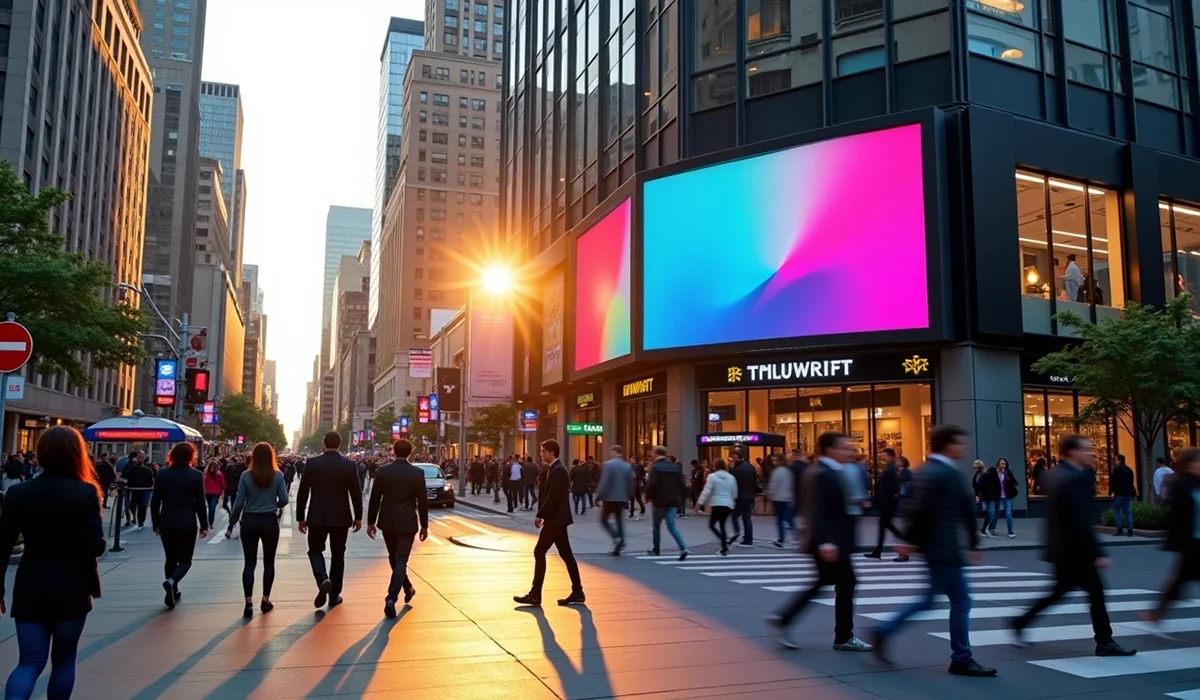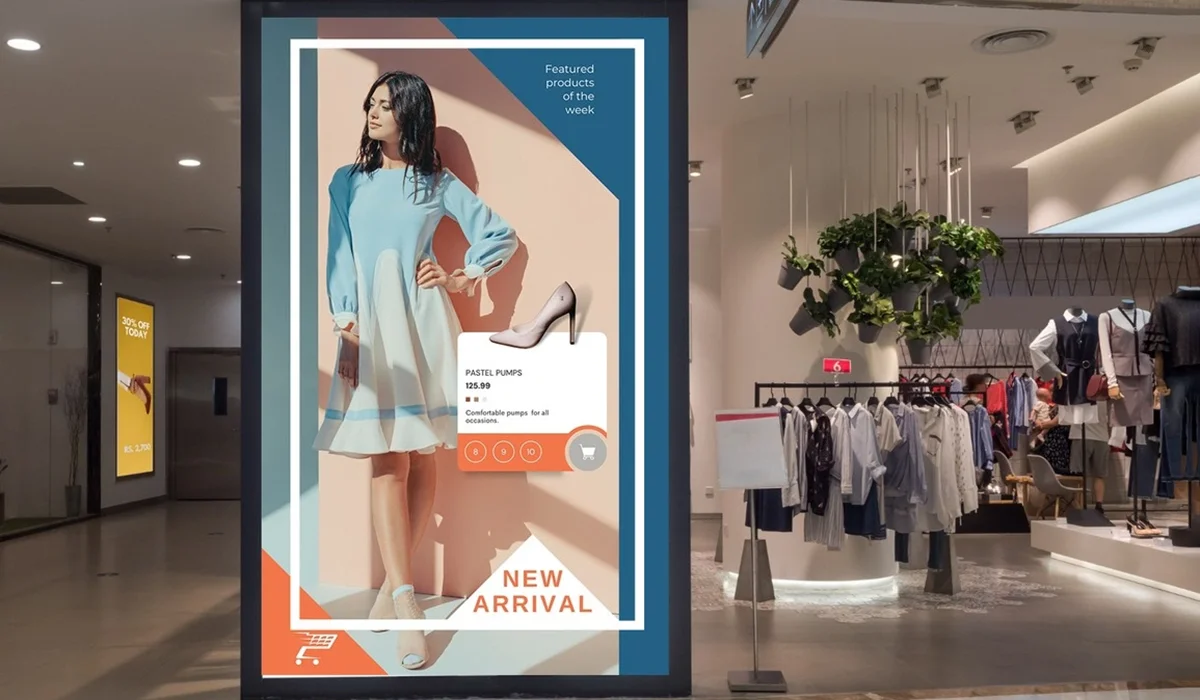Effective marketing strategies have become rare as today’s digital world faces saturation.
Research shows that 64% of consumers choose to buy from brands that create individual-specific experiences. This radical alteration in consumer behavior makes us rethink our marketing approach to stimulate business growth. The best marketing strategies in 2025 blend innovation with human connection. Brands with clear positioning show 20% better long-term growth. Their consistent messaging can boost revenue up to 23%.
Experience tells us that creating a complete brand marketing strategy has become crucial to navigate competitive markets and maintain relevance. The digital world continues to change faster. Individual-specific experiences, automation, and analytical insights lead the way as dominant marketing approaches. B2B buyers show 92% more likelihood to purchase after reading credible reviews or case studies.
Seven proven approaches await exploration that will deliver measurable results in 2025.
Embracing AI in Marketing
AI has become a transformative force in the marketing realm. It has grown from simple automation to a vital strategic partner. Recent data shows 86% of marketing professionals save at least one hour daily in their normal workflow with AI. This time-saving benefit scratches the surface of AI’s true potential.
AI in Marketing Strategy Overview
AI’s role in marketing has grown beyond simple data analytics. It now handles high-level planning and decision-making. Marketing teams in 2025 serve as testing grounds to show how AI adds value to strategic business decisions. The numbers tell the story: 77% of marketers who use generative AI create more tailored content. AI now predicts market trends, tests campaign outcomes before launch, and adjusts resource allocation live.
Why AI Works in 2025
AI excels because it knows how to process vast amounts of data and extract useful insights. Over 60% of marketers now use AI in their campaigns. More than 50% believe it will boost their marketing performance.
Customer experience tailoring stands out as AI’s strongest suit. About 62% of consumers prefer to interact with digital assistants rather than wait for human agents. AI makes personalized marketing possible at scale by studying customer behavior patterns and predicting future actions.
Marketing teams benefit from AI through:
- Less time spent on routine, data-heavy tasks
- Better insights from data
- Faster revenue growth
- Better value from marketing technologies
Tools or Examples of AI in Marketing
Real-life applications show AI’s concrete benefits. Vanguard’s LinkedIn ad conversion rates jumped 15% with AI. Unilever’s customer service team cut response time by 90% using AI tools.
Popular AI marketing platforms include:
- HubSpot’s AI solution featuring Content Assistant and ChatSpot
- Adobe Marketo Engage to manage leads and email marketing
- Salesforce’s Einstein GPT to create content across multiple touchpoints
Companies have seen remarkable results with AI. MAC Cosmetics used AI-powered product suggestions and achieved a 20.56% add-to-cart rate. Their conversion rates went up by 2.3%. Renault’s AI virtual assistants cut customer service wait times by 93%. The company’s conversion rates improved by 4%.
Data-Driven Personalization
Personalization has grown from a nice-to-have feature into everything in marketing strategy for 2025. Brands that cater to specific customer needs are preferred by 47% of consumers. The just need for customized experiences has reached an all-time high.
Evidence-Based Personalization Strategy Overview
Customer information helps create customized experiences, measure campaign effectiveness, and make informed decisions through evidence-based personalization. The process involves collecting insights from touchpoints, segmenting audiences based on behavior and priorities, and implementing technology that automates personalization at scale. A strong first-party data strategy forms the foundation of successful personalization and can potentially double incremental revenue.
Why Personalization Works in 2025
Customer behavior tells a clear story—80% of customers buy more from companies that provide customized experiences. Personalized emails generate six times more transactions than generic ones. Customer frustration with irrelevant content drives this trend, as 63% express strong annoyance with generic ad messaging.
Companies that grow rapidly generate 40% more revenue from personalization compared to slower-growing competitors. Digital marketing leaders still face challenges with personalization implementation at 63%. This creates a chance for brands ready to invest in this strategy.
Tools or Examples of Personalization
Marketers can execute sophisticated personalization strategies through several platforms:
- Dynamic Creative Optimization (DCO): Uses AI to generate variations of marketing assets, delivering targeted content at scale
- Optimizely: Makes shared data-driven personalization in digital experiences
- Salesforce Personalization: Integrates with Data Cloud to deliver up-to-the-minute, one-to-one experiences
Franklin Sports shows successful implementation by using machine learning for product recommendations across channels. Starbucks’ mobile app uses purchase history and location data for personalization, which generates about 22% of all US sales.
In spite of that, brands must balance personalization with consumer privacy protection as data privacy regulations become stricter. This makes first-party data strategies more valuable than ever.
Content Marketing Evolution
Content marketing has become the life-blood of successful marketing strategies. Industry revenue will reach USD 107.00 billion by 2026. The field has grown beyond basic content creation and become essential for businesses that want measurable results.
Content Marketing Strategy Overview
A content marketing strategy shows your “why”—your reasons for creating content, your target audience, and your unique way of helping them. Companies that write down their content strategies are nowhere near as challenged with implementation. They also see themselves as more effective at content marketing. A complete strategy has five key components: business case, operations plan, audience personas, brand story, and channel plan. This framework lines up teams and delivers consistent results.
Why Content Marketing Works in 2025
The numbers paint a clear picture. About 54% of businesses planned to increase their content marketing budget in 2024. B2B marketers expect budget increases in 2025, with 46% planning to spend more. These investments pay off well – 58% of B2B marketers reported higher sales and revenue from content marketing. Content marketing gets 3x more leads than outbound marketing and costs 62% less.
Today, 54% of marketers track content marketing ROI in their companies. This shows growing accountability. About 83% of marketers have found that quality beats quantity, even with less frequent posting.
Tools or Examples of Content Marketing
Modern content marketing depends on specialized tools to improve strategy and execution:
- Content Hubs: These platforms bring assets, guidelines, and workflows together, cutting redundant creation by up to 40%
- AI-powered Analytics: Tools like BuzzSumo and Semrush help find trending topics and optimize content for search performance
- Syndication Networks: These systems spread content on external sites while keeping brand consistency
Looking ahead, 61% of B2B marketers plan to invest more in video content during 2025. Another 52% will focus more on authority content. These trends show the ongoing shift toward high-value content formats.
Video Marketing and Short-Form Content
People now watch online videos for about 17 hours every week. This has led 89% of businesses to add videos to their marketing plans. Brands must embrace this trend to stay competitive in 2025.
Video Marketing Strategy Overview
Short-form videos that run under 60 seconds now dominate the digital world. These brief clips give marketers their best return on investment, according to 39% of professionals. Companies have moved beyond simple product demos and now create various types of videos to reach their audience. Explainer videos lead the pack with 73% usage. Social media videos follow at 69%, while testimonials account for 60%.
More than half of marketers now create their own videos. The biggest problem for those who haven’t started video marketing is not knowing where to begin – 37% mention this challenge.
Why Video Works in 2025
Video marketing’s success is clear – 93% of marketers plan to keep or increase their video budgets in 2025. The numbers back this up. Marketing videos have convinced 82% of consumers to buy products. Video quality matters too, as 91% say it influences their trust in a brand.
Brief videos have become a powerful tool because 78% of consumers prefer to learn about products through them. Videos on social media get twice as much engagement as posts with just images. They also boost email click-through rates by up to 300%.
Tools or Examples of Video Marketing
TikTok, Instagram Reels, and YouTube Shorts are the main platforms for short-form videos. YouTube Shorts stands out with about 2 billion monthly viewers and the highest engagement rate at 5.91%.
Wistia and Vidyard provide detailed video marketing solutions with analytics integration. AI tools like Canva and Descript have made video production easier. Now teams can create professional content without special skills.
Smart brands know how to turn one video into dozens of marketing assets. Local content that reflects community environments has become a growing trend. This authentic approach is hard for AI to copy and helps brands connect better with their audience.
Voice Search Optimization
People now use voice commands to look for products and services. The numbers are staggering – about 1 billion voice searches happen every month. Marketers who think ahead must adapt to this transformation.
Voice Search Strategy Overview
Voice search optimization makes content match the way people talk, not just type. Traditional SEO targets short phrases, but voice search needs natural language that sounds like real conversation. The original step should focus on long-tail keywords that sound like questions – starting with who, what, where, when, why, and how. Content structured in a question-answer format works better for voice search results.
Why Voice Search Works in 2025
Voice search keeps getting more powerful as more people start using it. Here’s what we see right now:
- Voice powers 20% of all mobile searches
- Americans who keep taking voice assistants number 123.5 million
- Smart speakers sit in 32% of US homes
- 27% of people with smartphones use voice search daily
Voice search really shines when you have to find local businesses – 58% of consumers use it this way. Mobile voice searches look for local results three times more often than text searches. This creates a great chance since 76% of people who search locally visit a business within 24 hours.
Tools or Examples of Voice Optimization
You just need several technical approaches to make voice search work:
Featured snippets are vital since they provide 40.7% of voice search results from these “position zero” spots. Tools like AnswerThePublic help you find common questions in your field. Schema markup helps search engines understand your content better.
Local businesses must optimize their Google Business Profile because voice assistants pull information straight from these listings. FAQ sections with clear questions and short 30-word answers match voice search priorities. Google Assistant usually gives answers around 41 words long.
Augmented and Virtual Reality Experiences
AR/VR technologies are changing how brands connect with consumers. The AR/VR market will reach USD 200.87 billion by 2030. Market experts predict a strong growth rate of 22% between 2025 and 2030. This growth shows a major transformation in how marketing strategies work.
AR/VR Strategy Overview
AR and VR have grown from experimental tech into key marketing tools. AR adds digital elements to what we see around us, while VR creates complete digital worlds. These tools stand out from traditional advertising methods. A meta-analysis showed that mixing traditional marketing with AR led to triple the brand impact at 41% of the cost. AR/VR tools help potential customers see and interact with products before buying them.
Why AR/VR Works in 2025
AR/VR creates lasting memories that shape buying choices. About 93% of customers want to use AR when they shop and buy products. Many are ready to spend more money – 40% would pay extra for items marketed through AR. Fashion brand Rebecca Minkoff found that their customers were 65% more likely to buy after trying AR features.
These technologies bring more benefits to the table. Gunner Kennels cut their return rates by 5% with AR sizing tools. BON V!V’s AR campaign kept users engaged for two minutes on average. Brand awareness tripled when companies used AR in their campaigns.
Tools or Examples of AR/VR in Marketing
Many brands have made AR/VR work for them. IKEA’s Place app helps customers see how furniture looks in their homes before buying. Maybelline built the world’s biggest AR mirror in Kyiv – 43,000 square feet where people could try mascara virtually.
Companies can start using AR/VR with platforms like Niantic’s 8th Wall that offer complete WebAR development options. Social media platforms like TikTok, Instagram, and Snapchat have built-in AR features ready for brands to use. These tools make immersive marketing available to companies whatever their budget might be.
Omnichannel Marketing Integration
Customer touchpoint integration has become vital, with 76% of brands now considering omnichannel campaigns crucial to long-term growth. This unified approach shows a strategic rise from the disconnected marketing tactics used in previous years.
Omnichannel Strategy Overview
Omnichannel marketing delivers a smooth, unified experience through all customer touchpoints—both digital and physical. Traditional multichannel marketing promotes across multiple platforms, but omnichannel strategies integrate these channels to create customized experiences. This complete approach eliminates barriers between online stores, social media, websites, mobile apps, and brick-and-mortar locations. Customers remain central to every interaction. A successful omnichannel strategy needs:
- Deep understanding of audience patterns across channels
- Brand identity reinforcement through consistent messaging
- Smooth transitions between touchpoints
- A unified customer view through centralized data
Why Omnichannel Works in 2025
Statistics verify the power of omnichannel marketing. Companies using omnichannel strategies see 90% higher customer retention rates compared to single-channel marketers. Harvard Business Review’s research shows omnichannel customers spend 10% more online than single-channel consumers.
The approach excels in 2025 because customer expectations have shifted dramatically. Research shows 87% of customers feel frustrated when they must repeat themselves across multiple channels. The data reveals 83% of consumers research prices online before making in-store purchases. These numbers highlight the need for seamless channel integration.
Tools or Examples of Omnichannel Marketing
Leading brands demonstrate omnichannel excellence in action. Starbucks connects its loyalty program through its app, website, and physical stores. Customers earn rewards whatever way they make purchases. Sephora’s Virtual Artist tool lets customers try makeup products virtually, connecting digital and in-store experiences.
Businesses can implement omnichannel strategies using various platforms. Omnisend automates ecommerce across email, SMS, and push notifications. HubSpot provides a complete suite that connects marketing, sales, and customer service tools. Klaviyo focuses on data-driven commerce through email and mobile messaging.
Comparison Table
| Strategy | Key Statistics | Main Benefits | Notable Tools/Platforms | Implementation Examples | Reported Results |
|---|---|---|---|---|---|
| AI in Marketing | 86% of marketers save 1+ hour daily; 60% make use of AI in campaigns | Cuts repetitive tasks; Makes content personal; Gives useful insights | HubSpot AI; Adobe Marketo; Salesforce Einstein GPT | Vanguard (LinkedIn ads); MAC Cosmetics; Renault | 15% increase in ad conversion (Vanguard); 20.56% add-to-cart rate (MAC) |
| Data-Driven Personalization | 47% consumers prefer personalized brands; 80% more likely to purchase | Better customer participation; Higher conversion rates; Precise targeting | Dynamic Creative Optimization; Optimizely; Salesforce Personalization | Franklin Sports; Starbucks mobile app | 6x higher transaction rates for personalized emails; 22% of US sales (Starbucks) |
| Content Marketing | Market to reach $107B by 2026; 54% businesses increasing budget | 3x more leads than outbound; 62% lower cost | Content Hubs; BuzzSumo; Semrush | Not specifically mentioned | 58% of B2B marketers report increased sales |
| Video Marketing | 17 hours weekly video consumption; 89% businesses use video | Better engagement; Built trust; Improved conversion | TikTok; Instagram Reels; YouTube Shorts | Not specifically mentioned | 82% consumers purchase after watching videos; 300% increase in email CTR |
| Voice Search | 1B voice searches monthly; 32% US consumers own smart speakers | Better local discovery; Natural language optimization | AnswerThePublic; Google Business Profile | Not specifically mentioned | 76% of local searchers visit within 24 hours |
| AR/VR | Market to reach $200.87B by 2030; 22% CAGR | Better product views; Higher engagement; Fewer returns | Niantic’s 8th Wall; Social AR tools | IKEA Place app; Maybelline AR mirror | 3x brand lift; 59% lower costs; 65% higher purchase likelihood |
| Omnichannel Marketing | 76% brands call it essential; 87% customers want integration | Better retention; Smooth experience; Clear messaging | Omnisend; HubSpot; Klaviyo | Starbucks loyalty program; Sephora Virtual Artist | 90% higher customer retention; 10% higher spending |
Conclusion
Marketing has changed beyond recognition in 2025. This piece explores seven strategies that deliver measurable results instead of promises. These approaches work because they line up with basic changes in consumer behavior and make use of technological advances.
AI leads this radical alteration. It saves marketers time and gives deeper insights into customer behavior. The data helps create tailored experiences that 80% of customers expect before buying. Content marketing proves its worth by generating three times more leads at lower costs than traditional outbound methods.
Short-form video has become the clear winner in engagement. About 82% of consumers buy products after watching marketing videos. Voice search optimization addresses people’s priorities for conversational interactions, especially for local businesses that need quick customer action.
AR/VR technologies have moved past being just novelties. These practical tools improve conversion rates and reduce returns by a lot. The need for omnichannel integration shows that today’s customer experience crosses multiple touchpoints. This requires smooth experiences that build loyalty.
You don’t need to implement all seven strategies right away. The best approach is to identify which methods match your business goals and customer priorities. Then measure your results and grow step by step.
Successful marketers in 2025 know these strategies work best together. AI improves personalization while content powers omnichannel experiences. Immersive technologies create memorable touchpoints throughout the customer’s experience.
Note that marketing basics stay the same despite technological progress. Customers want real connections, useful information, and smooth experiences. Your success depends on how well these seven strategies help deliver what customers need, right when and where they need it.



